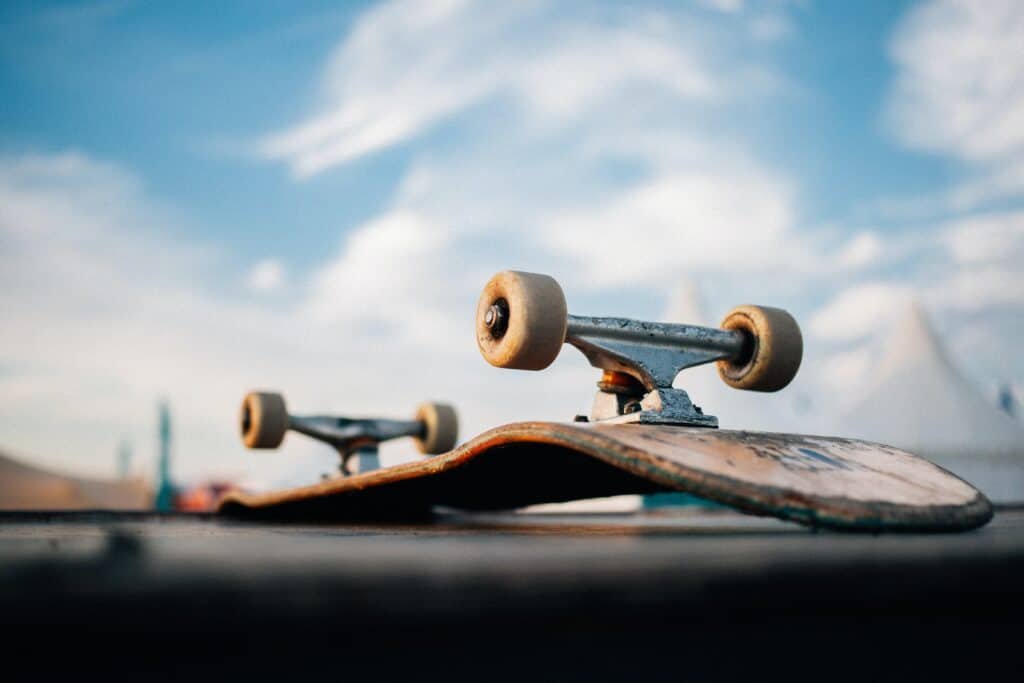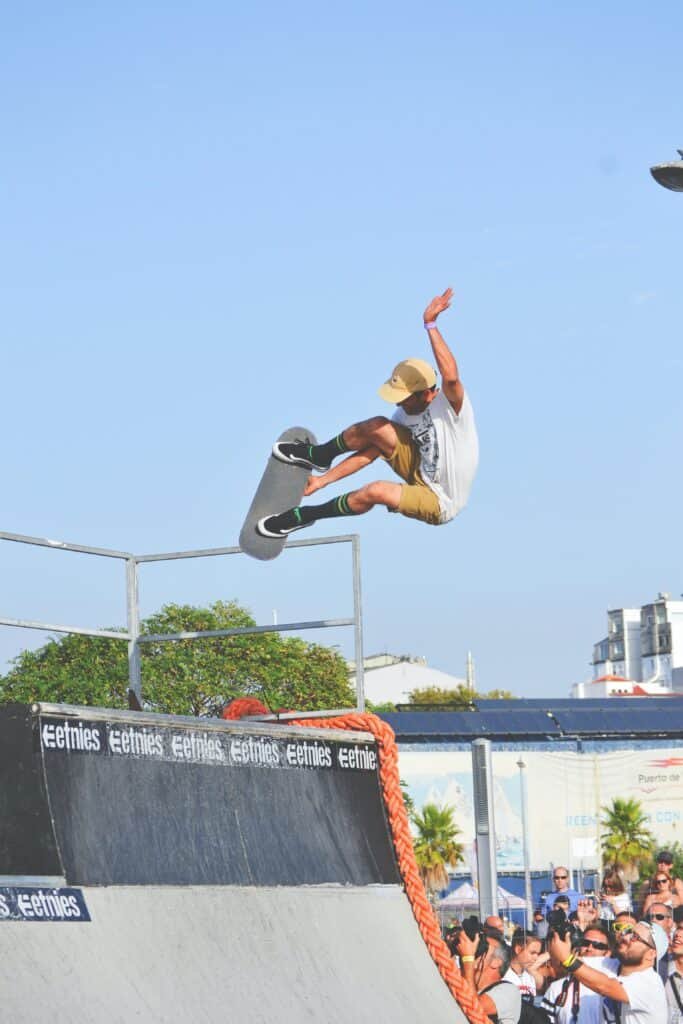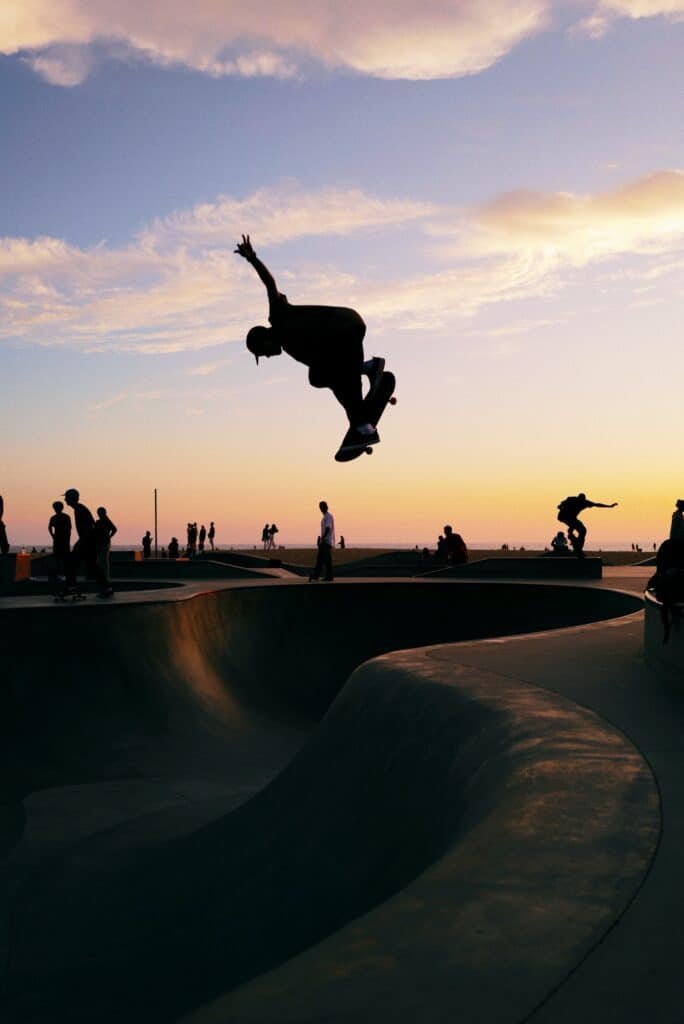Have you ever watched skateboarders effortlessly glide along rails, wondering how they achieve such impressive tricks? In this article, we will explore the fundamentals of grinding and sliding on rails, uncovering the secrets behind these mind-boggling maneuvers. Whether you’re a seasoned skater looking to refine your skills or a curious novice eager to learn, you’ll discover the key techniques and principles that make grinding and sliding on rails possible. Get ready to unlock the secrets of this thrilling skateboarding art form! Grinding and sliding on rails is an exhilarating and dynamic aspect of skateboarding. It requires skill, technique, and practice to execute tricks smoothly and safely. In this comprehensive article, we will explore the fundamentals of grinding and sliding on rails, covering various types of grinds, approach and positioning, maintaining balance, distribution of weight, sliding techniques, preventing common mistakes, safety tips, equipment considerations, and progression and skill development.
Types of Grinds
Grinds are the foundation of rail tricks in skateboarding, and there are several different types to master. Each grind involves placing the trucks of your skateboard on the rail and sliding along its surface. Let’s take a closer look at some of the most common grinds:
50-50 Grind
The 50-50 grind is a basic and versatile grind where both trucks of your skateboard make contact with the rail. As you approach the rail with speed, center your weight and align the trucks with the rail. The goal is to maintain balance and slide along the rail smoothly.
Smith Grind
The Smith grind is another popular grind where your front truck grinds on the rail, while the back truck hovers above it. As you approach the rail, position your body slightly facing the direction of your front foot. This will help you maintain balance and control throughout the grind.
Feeble Grind
The feeble grind involves grinding with the back truck on the rail, while the front truck hangs off the edge. Approach the rail at an angle and place your back truck on the rail, making sure to apply enough pressure for a solid grind. Keep your body centered and your weight balanced to maintain control.
Crooked Grind
The crooked grind is a stylish grind where your front truck grinds on the rail, while your back truck hangs off the edge. Approach the rail with enough speed and lock your front truck onto the rail. Lean slightly towards your back foot to maintain balance and control throughout the grind.
Bluntslide
The bluntslide is a challenging and visually appealing grind where your tail (back of the skateboard) slides along the rail. Approach the rail with confidence and ollie onto it while shifting your weight towards the tail end of the skateboard. Maintain balance and keep your eyes focused on the rail for a smooth and controlled bluntslide.
Approach and Positioning
The approach and positioning are crucial factors in executing successful grinds and slides on rails. Here are some key points to consider:
Approaching the Rail
When approaching a rail, it is important to build up enough speed to maintain momentum throughout the grind. Start with a comfortable distance from the rail and pump your legs to gain speed before making contact with the rail. As you progress, you can fine-tune your approach to match different rail heights and lengths.
Proper Foot Placement
Foot placement is critical in maintaining control and balance during grinds and slides. For most grinds, position your front foot slightly angled towards the nose of the skateboard and your back foot positioned squarely on the tail. Experiment with different foot positions to find what feels most comfortable and stable for you.
Body Position
Maintaining a proper body position is key to executing grinds and slides effectively. Keep your body centered over the skateboard and parallel to the rail. This will help distribute your weight evenly and allow for better control and balance. Avoid leaning too far forward or backward, as it can result in loss of balance.
Eyes on the Rail
As you approach the rail, keep your eyes focused on the part of the rail where you intend to make contact. This visual focus will help you align your skateboard correctly and anticipate any adjustments needed during the grind. By keeping your eyes on the rail, you can maintain better control and increase the chances of a successful grind.

Maintaining Balance
Maintaining balance is crucial for executing grinds and slides smoothly. Here are some tips to help you maintain balance throughout your tricks:
Centering Your Weight
To maintain balance, focus on centering your weight over the skateboard. By distributing your weight evenly between your front and back foot, you can achieve better stability and control during grinds and slides. Avoid leaning too far in any direction, as it can disrupt your balance and potentially lead to a fall.
Balancing Your Upper Body
Along with centering your weight, it is important to balance your upper body during grinds and slides. Keep your shoulders parallel to the ground and aligned with the rail. This will help you maintain a stable and upright position, preventing any excessive twisting or tilting that might throw off your balance.
Utilizing Arm Movement
Arm movement can greatly contribute to maintaining balance while grinding or sliding on rails. As you approach the rail, use your arms to maintain balance and control. Keep them extended slightly to the sides, using them as counterweights to adjust for any shifts in weight or position during the trick. Practicing coordinated arm movement will enhance your overall balance and control.
Adjusting Foot Pressure
During grinds and slides, be aware of the pressure you apply to your feet. Find the right balance between applying enough pressure to keep your board securely on the rail, and not exerting too much pressure that could hinder your movement or cause the skateboard to slip off the rail. Continuously adjust your foot pressure to adapt to changes in the rail surface or the angle of your grind.
Distribution of Weight
Understanding weight distribution is essential for adapting to different grinds and maintaining control. Here are some key points to consider:
Understanding Weight Distribution
Weight distribution plays a crucial role in controlling the balance and stability of your skateboard. When grinding or sliding, pay attention to where you distribute your weight. Being aware of how your body movements affect the distribution of weight on the skateboard is the key to maintaining control and preventing falls.
Shifting Weight for Different Tricks
Different grinds may require slight adjustments in weight distribution. For example, on a frontside 50-50 grind, you may need to shift a bit more weight towards your back foot to control the positioning of your trucks on the rail. Experiment with different weight shifts to find the optimal balance for each specific grind.
Balancing Front and Backfoot
Maintaining an even distribution of weight between your front and back foot is important for overall stability. Avoid placing too much weight on either foot, as it can throw off balance and control during your tricks. Practice finding that sweet spot where weight distribution feels comfortable and balanced for various grinds and slides.
Adjusting Weight Distribution Mid-Grind
Weight distribution on the skateboard can also be adjusted during a grind or slide. Pay attention to the feel of the grind and make necessary adjustments to your weight distribution to maintain control and stability. Small shifts in weight can make a significant difference in your ability to complete the trick smoothly.

Sliding Techniques
Mastering the art of sliding is vital for executing grinds and slides on rails. Here are some techniques to help you improve your sliding skills:
Body Movement for Sliding
To achieve a smooth and controlled slide, your body movement should complement your grind. Avoid excessive twisting or leaning as it can disrupt the balance and lead to falls. Keep your body aligned with the direction of the rail and focus on maintaining a consistent sliding motion.
Controlling Speed and Sliding Distance
Controlling your speed and sliding distance is a crucial aspect of sliding techniques. To increase speed, generate momentum through your approach and maintain a compact body position. If you need to slow down, focus on shifting your weight slightly towards your back foot while still maintaining balance and control. Experiment with different techniques to regulate your speed and sliding distance according to the desired trick.
Grinding Surface Considerations
The type and condition of the grinding surface can greatly impact your sliding. Smooth, well-maintained surfaces offer better and more predictable slides, while rough or uneven surfaces may hinder your ability to slide smoothly. Pay attention to the quality of the rail and adjust your technique accordingly to optimize your sliding performance.
Impact and Landing Techniques
When approaching the end of a rail or preparing for a landing, it is crucial to prepare for impact. Keep your knees slightly bent to absorb any shock and maintain stability upon landing. Practice developing the coordination to smoothly transition from the grind or slide to the next part of your trick, ensuring a seamless execution.
Preventing Common Mistakes
A vital aspect of mastering grinding and sliding on rails is avoiding common mistakes that can hinder your progress and increase the risk of injury. Here are some tips to help you prevent these mistakes:
Avoiding Wheel Bite
Wheel bite occurs when the wheels of your skateboard come into contact with the board causing a sudden stop or loss of balance. To prevent wheel bite, ensure that your trucks are properly tightened and that your wheels have enough clearance from the skateboard deck. Regularly inspect your setup and make any necessary adjustments to avoid wheel bite accidents.
Maintaining Control
Maintaining control throughout grinds and slides is crucial to prevent falls and accidents. Avoid excessive speed or trying tricks that are beyond your skill level, as it can increase the chance of losing control. Focus on mastering the basics, refining your technique, and gradually progressing to more advanced tricks as your skills improve.
Preventing Rail Hang-ups
Rail hang-ups occur when your skateboard gets caught on the rail during a grind or slide, abruptly stopping your momentum. To prevent rail hang-ups, ensure that your trucks are properly adjusted and that the edges of your skateboard’s deck are not worn or damaged. Additionally, pay attention to your foot placement and weight distribution to avoid any unnecessary contact with the rail.
Limiting Speed Wobbles
Speed wobbles occur when your skateboard starts oscillating uncontrollably at high speeds, making it difficult to maintain balance and control. To limit speed wobbles, ensure that your skateboard’s trucks are properly tightened and that your wheels and bearings are in good condition. Gradually increase your speed over time, allowing yourself to become comfortable and develop the necessary stability to avoid speed wobbles.

Safety Tips
While grinding and sliding on rails can be exciting, it is essential to prioritize safety. Here are some safety tips to keep in mind:
Wearing Protective Gear
Protective gear, such as a helmet, knee pads, and elbow pads, is crucial for your safety while skateboarding. Always wear the appropriate protective gear to prevent injuries and minimize the risk of serious accidents. Investing in high-quality protective gear can provide added peace of mind while practicing grinding and sliding on rails.
Assessing Rail Conditions
Before attempting any tricks on a rail, take a moment to assess the conditions. Check for any obstacles, debris, or damages that may affect your sliding or grind. Avoid rails that are excessively rusted, unstable, or in poor condition. By ensuring the rail is safe and suitable for your tricks, you can minimize the risk of accidents during your practice sessions.
Starting with Basic Grinds
If you are new to grinding and sliding on rails, it is important to start with basic grinds. Mastering the fundamentals and building a solid foundation is essential for skill development and safety. Begin with simple grinds, such as the 50-50 grind, and gradually progress to more advanced techniques as your confidence and skills improve.
Practicing on Appropriate Surfaces
Choose appropriate surfaces for practicing grinding and sliding. Smooth, well-maintained rails provide optimal conditions for learning and mastering tricks. Avoid attempting tricks on surfaces that are rough, uneven, or unstable, as they can increase the risk of accidents. Practice in designated skate parks or areas specifically designed for skateboarding.
Equipment Considerations
Choosing the right equipment plays a significant role in your grinding and sliding performance. Here are some equipment considerations to keep in mind:
Choosing the Right Skateboard
Selecting the right skateboard is critical for grinding and sliding on rails. Opt for a skateboard with a deck width and shape suitable for your foot size and riding style. Consider the length and shape of the board as they can impact your control and maneuverability on rails. Consult with experienced skateboarders or visit a reliable skate shop to find the skateboard that best suits your needs.
Optimal Rail Setup
Your skateboard’s rail setup can greatly impact your ability to grind and slide effectively. Choose rails that match the width of your trucks, ensuring a secure and stable fit. Additionally, it is crucial to maintain your trucks in good condition, regularly inspecting and replacing any worn or damaged parts that could affect your performance.
Quality of Wheels and Bearings
The quality of your skateboard’s wheels and bearings is vital for smooth and controlled grinding and sliding. Opt for high-quality wheels designed for grinding, as they offer better durability and performance. Good quality bearings will allow for optimal rolling speed and reduce friction, making your grinding and sliding experience more enjoyable.
Importance of Grip Tape
Grip tape is an integral part of your skateboard setup as it provides traction and grip for your feet. Ensure that your grip tape is properly applied to the deck, avoiding any air bubbles or loose edges that may affect your control. Replace worn-out grip tape regularly to maintain optimal grip and prevent any unexpected slips or accidents.
Progression and Skill Development
Improving your skills and progressing in grinding and sliding on rails requires dedication and practice. Here are some tips for progressing and developing your skills:
Starting with Basic Slides
Begin your progression by practicing simple slides, such as 180 slides or reverts. Perfecting these basic sliding techniques will build your confidence and lay the groundwork for more advanced tricks. Focus on mastering your balance and control during each slide, gradually increasing your sliding speed and distance as you improve.
Gradually Introducing New Grinds
Once you have solidified your sliding techniques, gradually introduce new grinds to your skill set. Experiment with different grinds, starting from the basics and progressing to more complex tricks. Focus on mastering each grind before moving on to the next, ensuring that you have a solid foundation of technique and control for each trick.
Experimenting with Varied Surfaces
To challenge yourself and enhance your adaptability, experiment with grinding and sliding on rails of varying surfaces. Different surfaces can offer unique challenges, such as different levels of smoothness or grip. By practicing on diverse surfaces, you will develop the ability to quickly adjust your technique and adapt to different scenarios.
Building Confidence and Technique
Building confidence in your abilities is essential for skill development in grinding and sliding on rails. Be patient and persistent, celebrating small victories along the way. Focus on refining your technique, paying attention to details such as foot placement, weight distribution, and body positioning. With practice and perseverance, your confidence will grow, allowing you to tackle more advanced tricks with ease.
Mastering the fundamentals of grinding and sliding on rails requires dedication, practice, and an understanding of technique and safety. By following the tips and techniques outlined in this article, you can develop your skills, improve your confidence, and progress in this exciting aspect of skateboarding. Remember to always prioritize safety, wear protective gear, and practice in appropriate environments. With determination and perseverance, you will unlock the thrilling world of grinding and sliding on rails.
